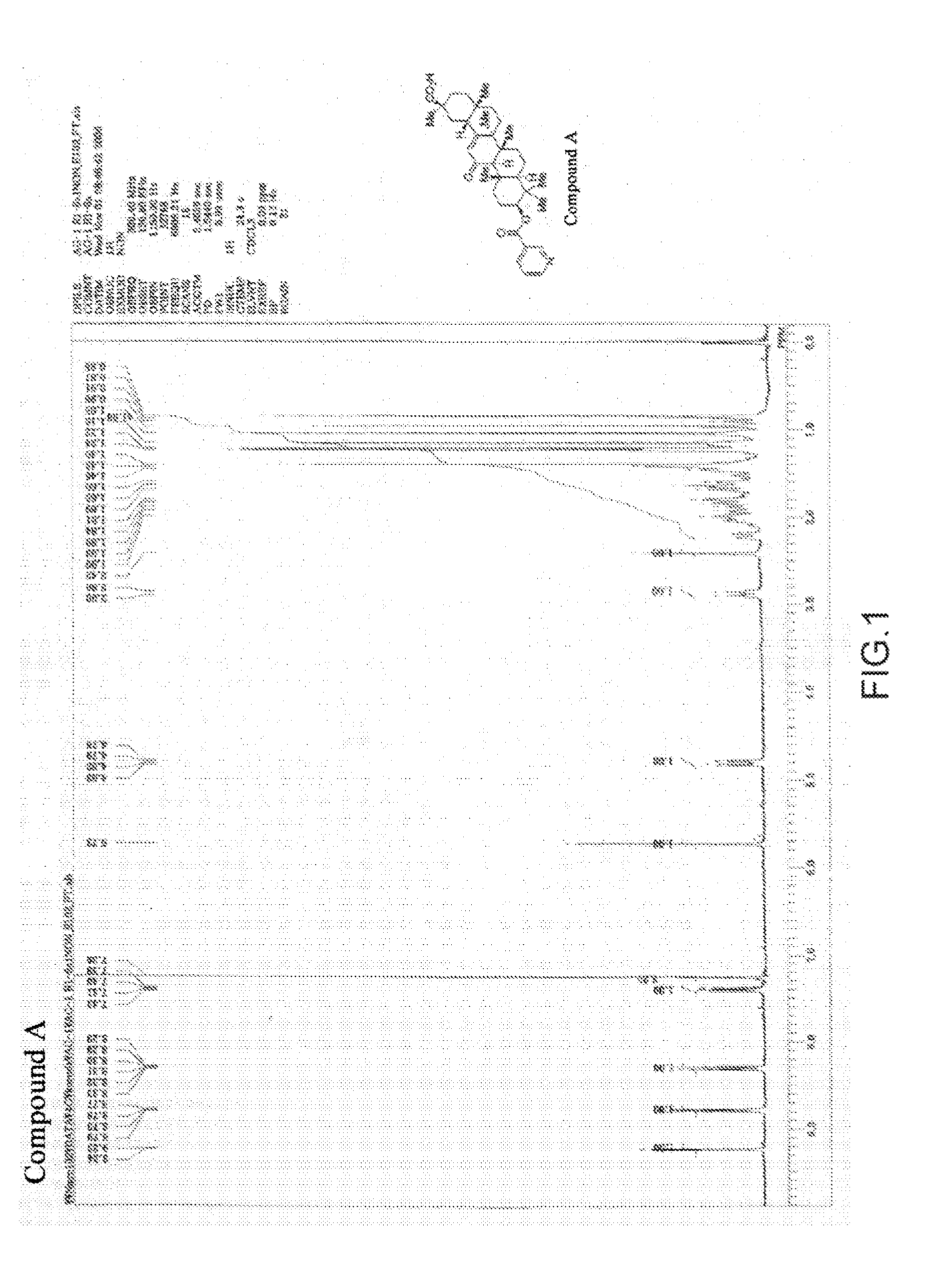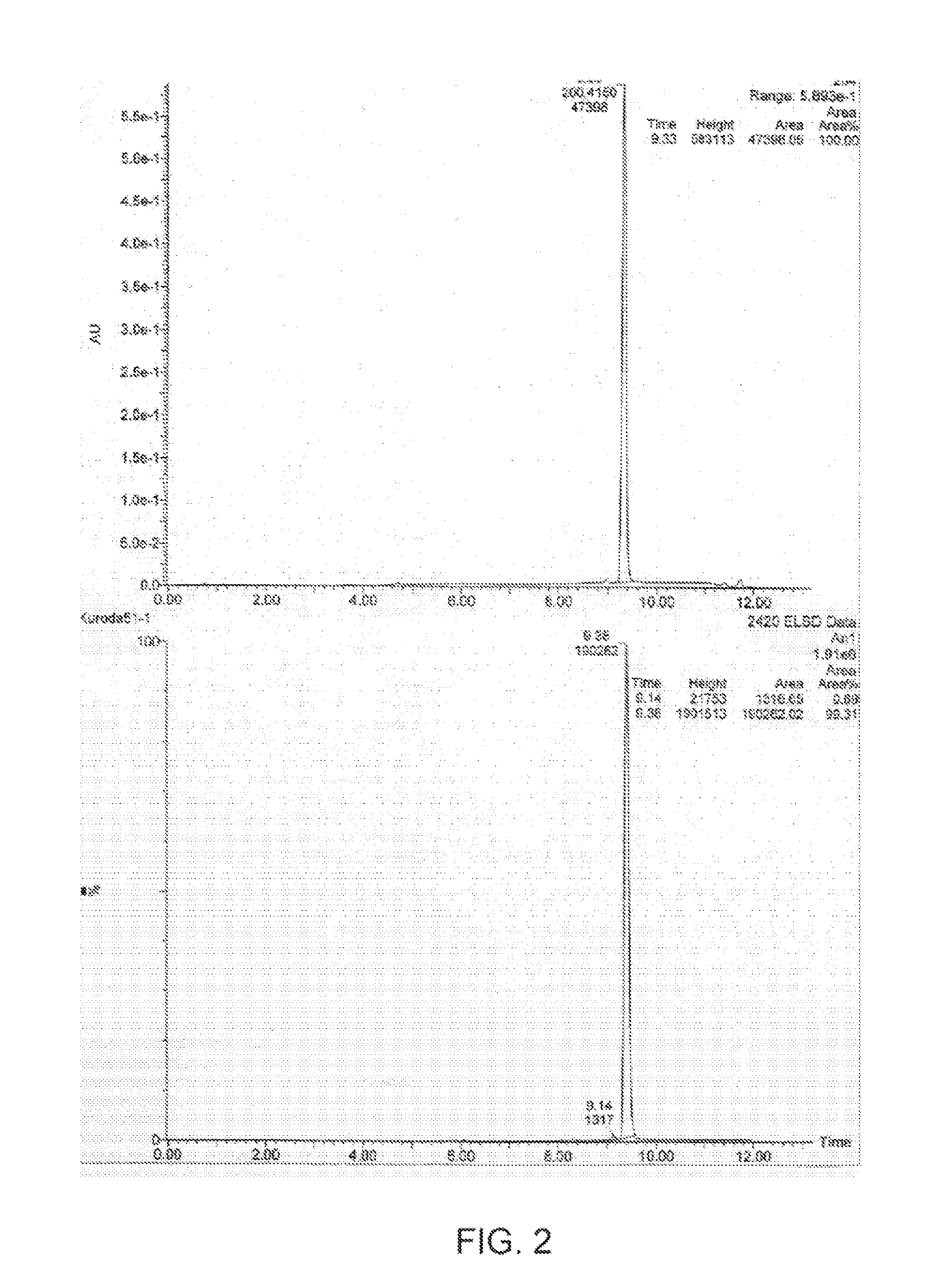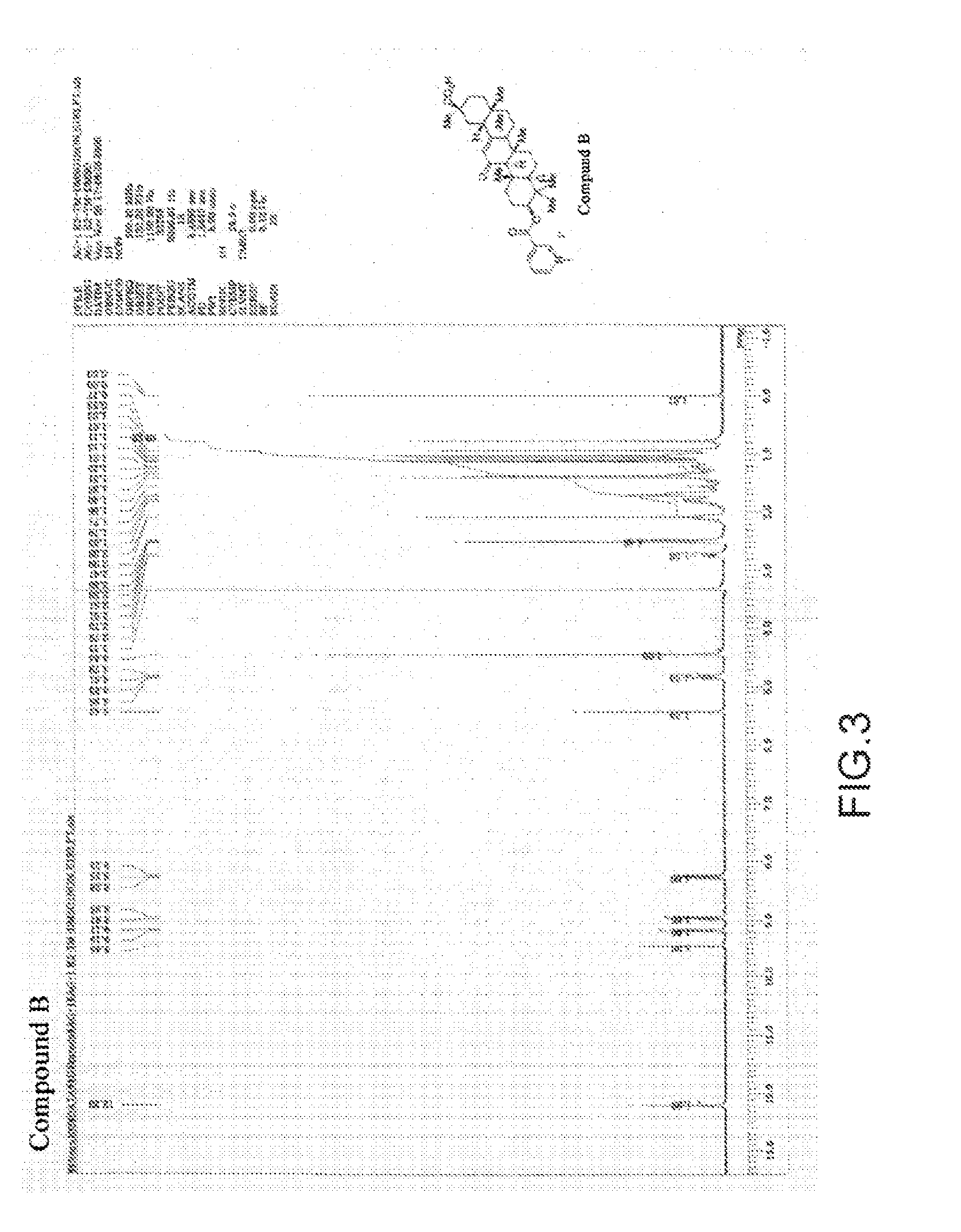Glycyrrhetinic acid derivative and use thereof
- Summary
- Abstract
- Description
- Claims
- Application Information
AI Technical Summary
Benefits of technology
Problems solved by technology
Method used
Image
Examples
example 1
[0057](Synthesis of the Glycyrrhetinic Acid Derivatives of the Present Invention)
The glycyrrhetinic acid derivative (henceforth also called Compound B) in which X in Formula (3) is iodide ion (I- ) was synthesized according to the following scheme:
[0058]Namely, under an argon atmosphere, nicotinoyl chloride hydrochloride (38.2 g, 214.5 mmol, 2.5 equivalents) and dichloromethane (700 ml ) were placed in a 2.0 L 5-necked flask; and pyridine (138.7 ml, 1.716 moles, 20 equivalents) was added dropwise thereto with stirring at an internal temperature of 23° C. After the end of the dropwise addition, 18β-glycyrrhetinic acid (35.0 g, 85.8 moles, 1.0 equivalent) was added to the reaction solution and was stirred at an internal temperature of 23° C. for one hour. After the disappearance of the raw material was confirmed using TLC (thin layer chromatography), water (800 ml ) was added, followed by further stirring for one hour. The organic layer was collected and dried over anhydrous sodium su...
example 2
(Checking Inhibitory Effect on Glutamate Production by Activated Microglia)
[0060]Next, Compound A and Compound B were checked as to their inhibitory effect on glutamate production in activated microglia. That is, mouse primary microglia were isolated from primary mixed glial cell cultures, prepared from neonatal C57BL / 6 mice brains by the “shaking off” method on the 14th culture day or later (Suzumura, A. et al J. Neuroimmunol. 15, 263-278 1987). Mouse cerebral cortex primary neuronal cells were prepared from the cerebral cortices of C57BL / 6J mice at embryonic day 17, and were plated on polyethyleneimine -coated cover glasses, and were used at culture day 10-13 (Takeuchi, H. et al. J. Biol. Chem. 280, 10444-10454, 2005.)
[0061]Using the culture system of neuronal cells utilizing a microglia conditioned medium, the neuronal cell damage by activated microglia was analyzed with time by the following methods (Takeuchi, H. et al. J. Biol. Chem. 280, 10444-10454, 2005.) Namely, 1 μg / ml lip...
example 3
Checking the Survival Extension Effect in an ALS Model Mouse)
[0070]The assessment of drug efficacy was conducted using, as an animal model of neurodegenerative diseases, the human superoxide dismutase 1 (SOD1) G93A mutant transgenic mouse, which is widely used as a model of amyotrophic lateral sclerosis (ALS). Said transgenic mice were procured from Jackson Laboratory, USA.
[0071]Starting at 6-7-weeks of age, which is considered to be an early ALS onset period, they were intraperitoneally administered with 20 mg / kg body weight of Compound B, which is a novel gap junction inhibitor, CBX, or the same volume of physiological saline (PBS group) 3 times a week. The survival analysis was performed using the Kaplan-Meier method. The results are shown in FIG. 7.
[0072]As shown in a FIG. 7, the Compound B administered group showed on average an effect of extending survival by about 14 days (*, p<0.0002 vs PBS). The 14 day survival extension was a very good survival extension effect for this mo...
PUM
| Property | Measurement | Unit |
|---|---|---|
| Chemical formula | aaaaa | aaaaa |
Abstract
Description
Claims
Application Information
 Login to View More
Login to View More - R&D
- Intellectual Property
- Life Sciences
- Materials
- Tech Scout
- Unparalleled Data Quality
- Higher Quality Content
- 60% Fewer Hallucinations
Browse by: Latest US Patents, China's latest patents, Technical Efficacy Thesaurus, Application Domain, Technology Topic, Popular Technical Reports.
© 2025 PatSnap. All rights reserved.Legal|Privacy policy|Modern Slavery Act Transparency Statement|Sitemap|About US| Contact US: help@patsnap.com



